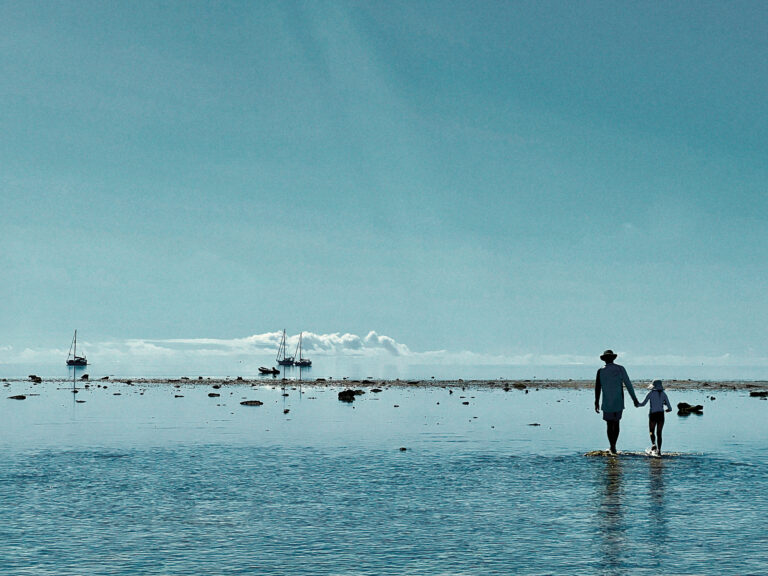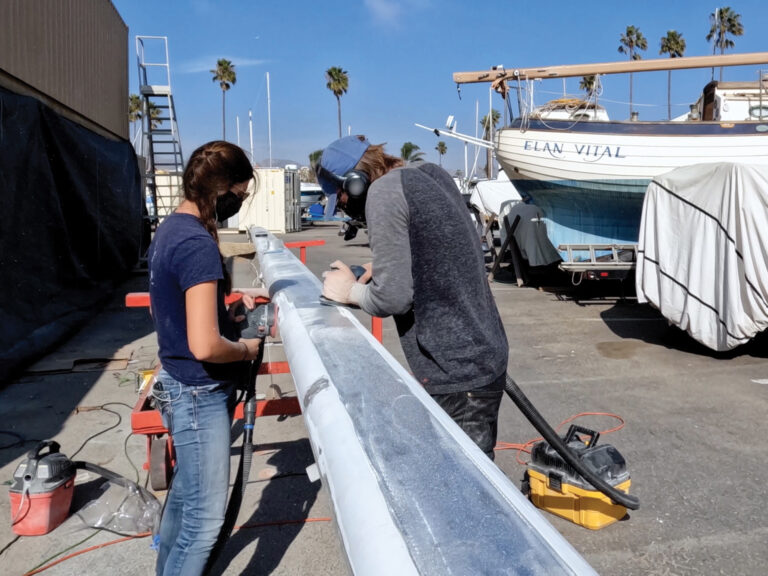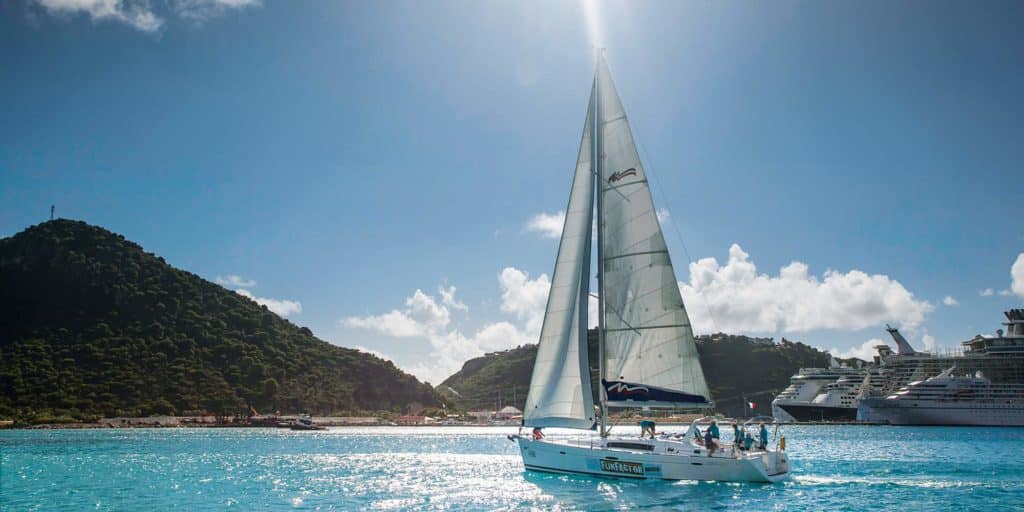
The strains of “The Star-Spangled Banner” rang clearly through the old Dutch fort. Sung so sweetly by the young islander, after “Het Wilhelmus” (the Dutch national anthem) and “The Golden Rock,” St. Eustatius’ anthem, it was surprising. After all, here we were on a tiny island in the middle of the Caribbean Sea, 1,200 miles from the U.S. mainland—and 120 miles from even the nearest U.S. territory, the U.S. Virgin Islands. Yet the 3,500 occupants of Statia (as St. Eustatius is colloquially called) claim a unique and affectionate connection to the United States.
During the American Revolution, Statia was one of the fledgling republic’s few shipping connections to Europe. Munitions and supplies trafficked through the then-bustling port were pivotal to the fight for independence.
But Statia’s charm lies in more than its rich history. Verdant beauty, treasures on land and sea, and the warmth of the people make the often bypassed island a breath of fresh air in the central Caribbean.
Statia is 33 miles south of St. Maarten—where my friends and I chartered a Beneteau 50.5 from The Moorings—and 8 miles north of St. Kitts. Because of the generally north-south orientation of these islands—including the other nearby islands of St. Barts, Nevis and Anguilla—a voyage to Statia promises a spectacular reach in the easterly trades.
Statia is about 5 miles long and 2 miles wide, and a 2,000-foot dormant volcano known as the Quill (kuil being the Dutch word for pit) dominates the landscape on the southern end. Halfway down the coast on the western, leeward side are the harbor and anchorage, beneath Fort Oranje and the picturesque capital village of Oranjestad. Statia definitely has a laid-back vibe—you won’t find five-star resorts, overpriced cocktails or a haughty attitude here, but you will find plenty of authenticity, warmth and charm.
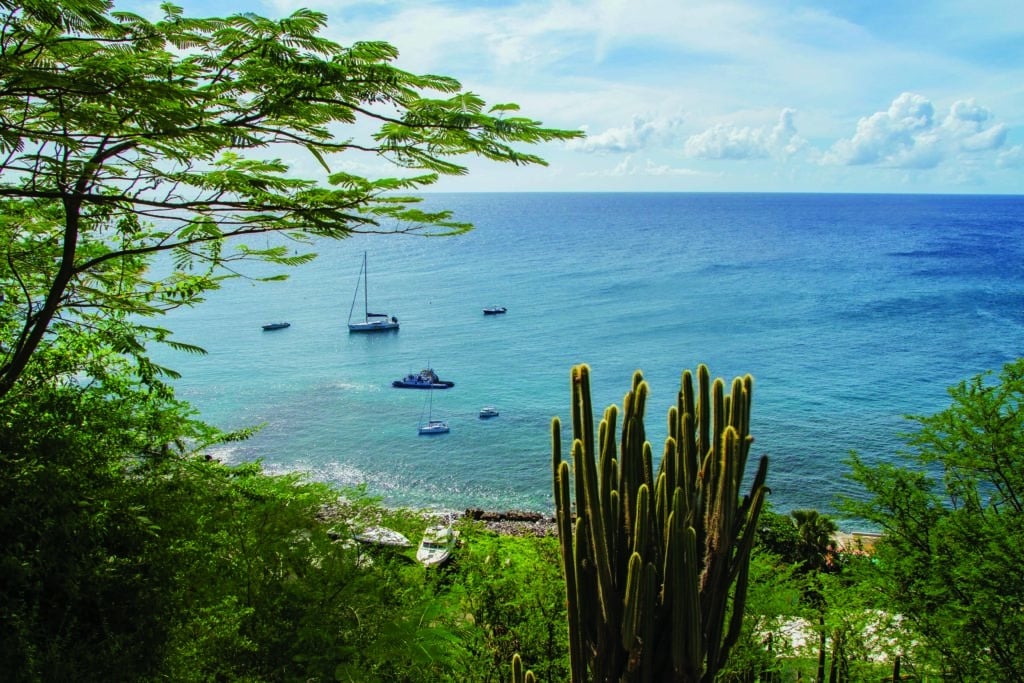
Although nearly 5,000 miles from The Hague, Statia is a municipality of the Netherlands, stemming from colonization in the 1600s. Despite its diminutive size, its central setting and proximity along trade routes made the island a prominent hub for shipping and trade in the 17th and 18th centuries. So prosperous was this lush mountainous paradise, it was called the Golden Rock. As a Dutch colony, Statia was a free port, where ammunition, food and supplies were traded to American revolutionaries, despite the British Royal Navy’s attempts to blockade shipping. Statia was critical to America’s battle for liberty.
Four months after the Declaration of Independence, when the brig Andrew Doria arrived at Statia’s shores flying the new American flag, the cannons at Fort Oranje greeted the ship with a cannon-fire salute. It was America’s first official recognition by a foreign nation, and duly noted. Statians take pride in their part in America’s freedom, and that day—November 16, 1776—is still celebrated annually with a street fair, fireworks, contests, and displays by schoolchildren.
Visiting Statia is easy — the entry fees are modest, and Oranje Bay, which is the only anchorage, is fairly protected from the prevailing conditions. You can tie up at the 250-foot pier (with prior arrangement) or pick up one of the dozen yellow mooring balls. Mooring fees are $10 per night or $30 a week, whether on a buoy or at the dock. Because the anchorage is a fairly open roadstead, in rougher conditions it may be advisable to use your own tackle to anchor behind the breakwater, where you’ll find good holding in the sand.
There is a sizeable new dinghy dock, which is also the site of lobster feeds and other events promoted to encourage tourism and mingling among islanders and visitors. To the right along the rubble road, at the entrance to the pier, is the harbor office (monitors VHF 16/17) where guests can register and fill out paperwork. To the left is the St. Eustatius National Park Foundation. It oversees both land and marine preservation, has information on Statia’s natural wonders and will collect related (but modest) usage fees. And it has toilets and showers that are serenaded by frogs and geckos.
From here, continue north along Lower Town past ruins softened by time and greenery. Tumbledown warehouses tell of a thriving haven of the 1700s, where 20,000 inhabitants once lived. These days, stop at the Old Gin House for a cocktail and Wi-Fi; settle into one of the plush chairs beneath a lazy ceiling fan, and catch up on the world. Gentrification has a solid foothold here, with eateries like the Blue Bead Restaurant and several shops along the way.
One-third mile north of the pier is a stone lane on the right that leads through rustling trees up a hill. It’s a steep and somber trek along a path well worn by the thousands of slaves marched along this route hundreds of years ago. Arrive at the crest at Fort Oranje and Statia’s only town, Oranjestad, on a bluff between mountainous bookends. Many of the village’s 18th-century brick buildings are still standing, and the quaint historic museum points out these and other notable features. Upper Town also holds a surprising number of restaurants for such a small community, including superb Chinese food at Sonny’s Cantonese Restaurant. Duggins Supermarket and several other small grocery stores are open daily for reprovisioning (however, hours are slim on Sundays). Currency on the island is the U.S. dollar.
The 10 hiking trails on the island range from a half-hour stroll through the Botanical Garden to the strenuous but rewarding trek up and into the heart of the volcano. Embark early in the morning before the tropical heat sets in. After summiting the lip of the crater (and catching your breath) drop down into a Jurassic Park of giant elephant ears, orchids and bromeliads that share the soil with banana, fig and breadfruit trees — evidence of the 70 plantations that once flourished here. Some of the rare and endangered wildlife that lives topside includes the red-bellied racer snake, Lesser Antillean iguana and red-billed tropic bird.
Wildlife abounds underwater as well. A marine park wraps around the entire 12-square-mile island, embracing a variety of habitat: calcareous reefs and corals; volcanic rock with cracks and fissures; a sandy plateau where scores of queen conch thrive; and beaches where sea turtles nest. Two excellent snorkel sites are adjacent to the anchorage. Plunge off your boat and discover a cannon on the ocean floor from one of the dozens of shipwrecks, amid waters brilliant with an underwater kaleidoscope of tropical fishes, corals and sponges.
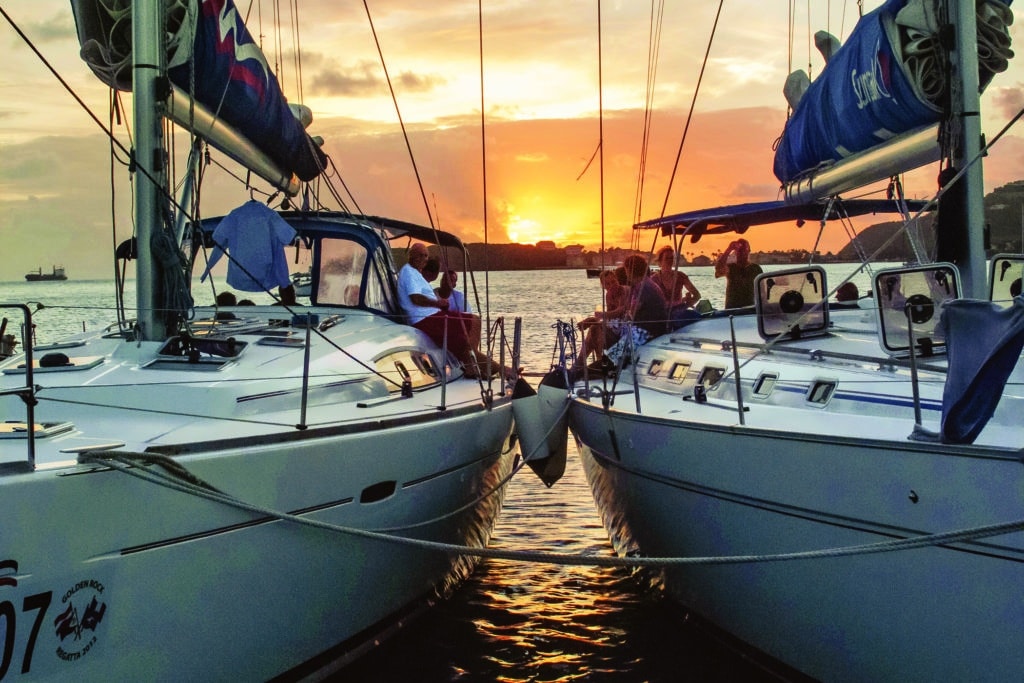
2012 Golden Rock Regatta
Other snorkel spots are off Boven National Park on the northern tip of the island at Jenkins Bay, and in the Statia National Marine Park’s southern reserve at Blind Shoal and Twelve Guns. If you plan to use the Marine Park’s moorings, you’ll need to visit the National Park Foundation to purchase an inexpensive snorkel/dive pass. Scuba diving, however, is allowed only via local dive operators, available in Lower Town.
Recently the residents of Statia thwarted an apparent takeover of the island by a large oil-terminal company. Last year the company, NuStar, was pressing to expand to a site just one mile from Oranjestad, at an important archaeological site. Giant storage tanks already occupy much of the northern end of the island, and a commercial pier and transfer station are obvious on the northwestern shore. But except when approached from the sea, the terminal is blocked from sight by historic Signal Hill. The residents formed a protest movement, and David beat Goliath. In lieu of the terminal expansion, Statia’s Strategic Development Plan pinpointed tourism as a healthy and viable economic growth alternative.
Statia not only wants more visitors to its shores, it needs tourism and the dollars it will bring. In return, the island provides plenty of reasons to visit: hiking, swimming, snorkeling and sailing. Yet aside from the fun and exploration of the island, I found the residents to be its most charming attribute.
My first visit took place during Statia Day festivities, which are celebrated on November 16. Our multinational cluster of sailors was enveloped by warmth and friendliness as we entered the street fair. My buddy Karen even got up on stage for a dance contest, and was wildly cheered by all. We shimmied on the cobblestones with locals, and tossed Frisbees to the children.
My friends and I had frequented a particular beverage stand run by Mona, who had a smile as wide as the island’s Zeelandia Bay. Her sons joined her in working the booth, and all were polite, delightful and attentive. Later in the evening, with the boys in charge of the business, Mona ambled into the streets to join us as we danced in the rain to “Bati’e Aleman,” one of the more popular songs (judging by the frequency of play and the merriment it caused). It was a night long remembered.
When I returned a year later and Mona spied me, she ran out from behind her booth to embrace me. You don’t find that on St. Barts.
Based in coastal California, Betsy Crowfoot is a frequent traveler who enjoys writing about yacht racing, water sports and the ocean environment.






